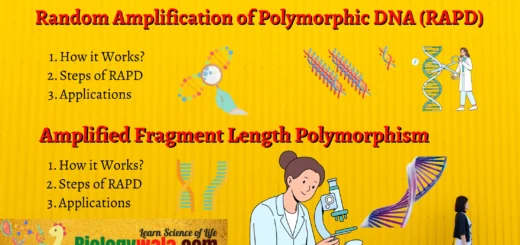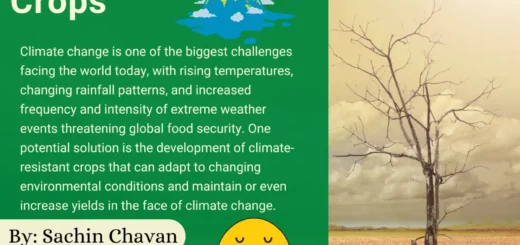FREE [Download] Campbell Biology Concepts & Connections 9th Edition pdf book
Campbell Biology Concepts & Connections 9th Edition
Campbell Biology Concepts & Connections 9th Edition pdf book you can download the book by clicking on the link at the end. But it is recommended that before downloading the Campbell Biology Concepts & Connections 9th Edition you should read about it, to get the most out of the book.
[Download] Campbell Biology Concepts & Connections 9th Edition pdf book recommend by experts in the field of biology. This Campbell Biology Concepts & Connections 9th Edition pdf book will help you to enhance your knowledge about biosciences from a basic level like the chemistry of life to Evolution, ecology and animal form, and functioning.
About The Authors of Campbell Biology Concepts & Connections 9th Edition :
Name: Campbell Biology Concepts & Connections
Edition: 9th
Publication: Pearson
Pages: 923
Biology is a vast subject that gets bigger every year, but an introductory biology course is still only one or two semesters long. This book was the first introductory biology textbook to use concept modules to help students recognize and focus on the main ideas of each chapter. The heading of each module is a carefully crafted statement of a key concept.
About The Book:
Below are some important highlights of new content and organizational improvements in Campbell Biology Concepts & Connections, Ninth Edition.
![FREE [Download] Campbell Biology Concepts & Connections 9th Edition pdf book 1 [Download] Campbell Biology Concepts & Connections 9th Edition pdf book](https://biologywala.com/wp-content/uploads/2021/09/Download-Campbell-Biology-1024x1024.jpg)
Chapter 1, Biology: Exploring Life This chapter has been extensively reorganized and revised. Our expanded coverage of the nature of science and scientific inquiry has now moved to the forefront of Chapter 1. The first of the five modules in this section provides a general description of data, hypothesis formation and testing, the centrality of verifiable evidence to science, and an explanation of scientific theories. The module describing how hypotheses can be tested using controlled experiments now includes a subsection on hypothesis testing in humans.
Unit I, The Life of the Cell This unit guides students from basic chemistry and the molecules of life through cellular structures to cellular respiration and photosynthesis. Throughout the Ninth Edition, the five themes introduced in Chapter 1 are highlighted with specific references. Examples from Unit 1 include “Illustrating our theme of ENERGY AND MATTER, we see that matter has been rearranged, with an input of energy provided by sunlight” (Module 2.9);
“The flow of genetic instruction that leads to gene expression, summarized as DNA S RNA S protein, illustrates the important biological theme of INFORMATION ” Module 3.15); “The interconnections among these pathways provide a clear example of the theme of INTERACTIONS in producing the emergent property of a balanced metabolism” (Module 6.15); and “The precise arrangements of these membranes and compartments are essential to the process of photosynthesis—a classic example of the theme of STRUCTURE AND FUNCTION ” (Module 7.2).
Unit II, Cellular Reproduction and Genetics The The purpose of this unit is to help students understand the relationship between DNA, chromosomes, and organisms and to help students see that genetics is not purely hypothetical but connects in many important and interesting ways to their lives, human society, and other life on Earth. The content has been reinforced with updated discussions of relevant topics, such as DCIS (also called stage 0 breast cancer), increased use of genetically modified organisms (GMOs), recent examples of DNA profiling, information about the 2015 California measles outbreak, a new infographic that charts emergent virus outbreaks, and new data on the health prospects of clones.
This edition includes a discussion of many recent advances in the field, such as an updated definition of the gene, and a largely new presentation of DNA technologies and bioinformatics, including extensive discussion in both text and art of the CRISPR-Cas9 system, GenBank, and BLAST searches.
Unit III, Concepts of Evolution This unit presents the basic principles of evolution and natural selection, the overwhelming evidence that supports these theories, and their relevance to all of biology—and to the lives of students. For example, a new Visualizing the Data figure (13.16) illustrates the growing threat of antibiotic resistance. Chapter 13 also includes a new Visualizing the Concept module (13.14) on the effects of natural selection that shows experimental data along with hypothetical examples.
Chapter 14 contains a new Evolution Connection module (14.9) featuring the work of Rosemary and Peter Grant on Darwin’s finches. Modules 15.14 to 15.19 were revised to improve the flow and clarity of the material on phylogenetics and include updates from genomic studies and new art (for example, Figures 15.17 and 15.19A)
Unit IV, The Evolution of Biological Diversity The diversity unit surveys all life on Earth in less than a hundred pages! Consequently, descriptions and illustrations of the unifying characteristics of each major group of organisms, along with a small sample of its diversity, make up the bulk of the content. Two recurring elements are interwoven with these descriptions: evolutionary history and examples of relevance to our everyday lives and society at large.
Unit V, Animals: Form and Function This unit combines a comparative animal approach with an exploration of human anatomy and physiology. The introduction to Chapter 20, Unifying Concepts of Animal Structure and Function, begins with the question “Does evolution lead to the perfect animal form?” and the question is answered in the Evolution Connection, Module 20.1, in the discussion of the lengthy laryngeal nerve in giraffes. By illustrating that a structure in an ancestral organism can become adapted to function in a descendant organism without being “perfected,” this example helps to combat a common student misconception about evolution.
Unit VI, Plants: Form and Function To help students gain an appreciation of the importance of plants, this unit presents the anatomy and physiology of angiosperms with frequent connections to the importance of plants to society. New Connections modules in this edition include an improved discussion of agriculture via the artificial selection on plant parts and via plant cloning in Chapter 31; updated discussions of organic farming, human harvesting of plant transport products (such as maple syrup and rubber), and GMOs in Chapter 32; and a new discussion of caffeine as an evolutionary adaptation that can prevent herbivory in Chapter 33.
Unit VII, Ecology In this unit, students learn the fundamental principles of ecology and how these principles apply to environmental problems. The Ninth Edition features a new Visualizing the Concept module that explains the global water cycle (34.18) and Visualizing the Data figures that compare ecological footprints (36.11), track global temperatures since 1880 (38.3A), and illustrate the results of a study on optimal foraging theory (35.12). Module 35.16 has been updated with new examples of the effects of endocrine-disrupting chemicals on animal behaviour and the EPA’s progress in evaluating endocrine disruptors in pesticides as potential hazards to human health.
Disclaimer: We are not providing any copyrighted PDF material here. We just provide the already available book material link for students and life science enthusiasts who can not afford the book.
Following is the link that to ou are looking for Campbell Biology Concepts & Connections 9th Edition:
Sachin’s Biology highly recommends this book for all life science students and undergraduate teachers too.
Disclaimer: We are not providing any copyrighted PDF material here. We just provide the already available book material link for students and life science enthusiasts who can not afford the book.
Do comment below if you like Campbell Biology Concepts & Connections 9th Edition blog and if this blog helped you, it means a lot and will give us the energy to work with the same enthusiasm in future! This is it for today. See you in the Next article, Thank you!
You will also like :
[Download] Free Campbell Biology Book PDF 12th Edition
[Download] Research methodology Book PDF by C. R. Kothari 2nd Edition
Download Plant Physiology Pdf Book By Taiz And Zieger
If you want important notes and updates about exams on your mobile then you can join SACHIN’SBIOLOGY on Instagram or Facebook and can directly talk to the founder of Sachin’s Biology and Author of biologywala.com Mr.Sachin Chavan M.Sc. NET JRF (AIR 21) GATE!

![[Download] Jawetz Melnick and Adelberg’s Medical Microbiology PDF Book Download 3 [Download] Jawetz Melnick and Adelberg’s Medical Microbiology PDF Book](https://biologywala.com/wp-content/uploads/2022/08/Jawetz-Melnick-_-Adelbergs-Medical-Microbiology-PDF-Book-_-BIOLOGYWALA.COM_-392x245.webp)

This download doesn’t work.
wait working on it!
Now you can ! Please let me know!